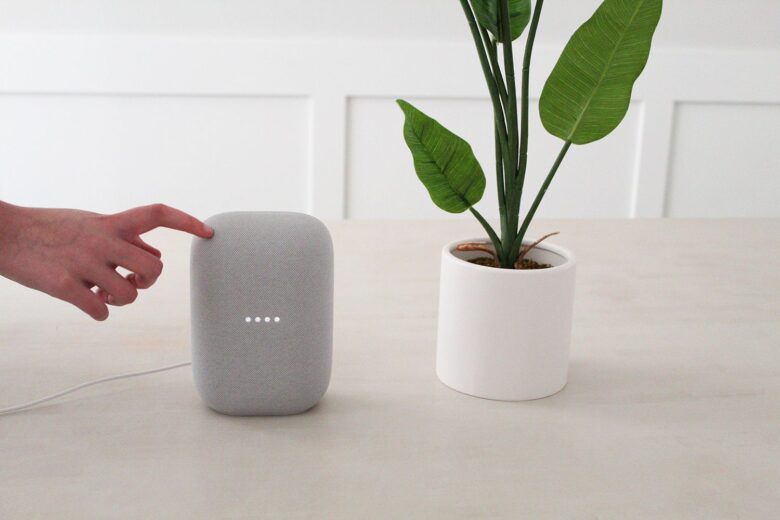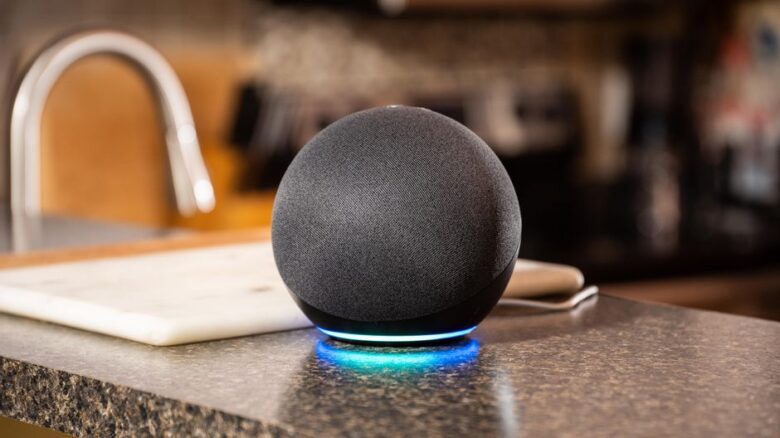Smart speakers are one of the more popular home automation devices for newbies because they offer easy entry into the smart home universe. People use them to listen to music, order food, catch up on the news, and remind themselves to do things. But every now and again, a smart speaker stops working unexpectedly.
If you ever find yourself in that position, the first thing to do is check to make sure your smart speaker has power. Believe it or not, a loss of power is the most common reason for a smart speaker not to work. Replacing batteries, plugging the device back in, or flipping a blown circuit breaker takes care of it.
If the device has power, it is time to move on to other things. Below are some possible reasons a smart speaker may appear to stop functioning. Go through them one at a time and you are likely to find the culprit in your case.
1. A Problem with Volume Control

Source: lifewire.com
After the power being off, the volume being turned down on a smart speaker is the next most common reason people think their devices are not working. Checking the volume control seems rudimentary, but it is worth a try. You may have previously turned down the volume and forgotten about it. Someone in your family could have turned it down.
Another possibility is that the volume control or the internal speaker isn’t working. If you try to adjust the volume and hear a crackling noise, there could be something wrong with the adjustment controller. Instruct the smart speaker to play a song and gradually adjust the volume up and down for a few seconds. If the music cuts in and out, you have discovered the problem.
2. Something in the Jack Port

Source: cnet.com
If your smart speaker includes a headphone jack, take a look at it. What you are doing is checking to make sure that nothing got stuck in it. This is a more common problem than people know, especially for smart speakers that sit on kitchen counters or tables. Any little thing stuck in the jack could trick the device into thinking that headphones are being used.
3. A Cache Problem
The home automation experts at Vivint say that many smart speakers, particularly those made by Google and Amazon, operate like small computers. They utilize a data cache to store information for faster retrieval. And like a tablet or laptop, the cache can cause problems if it gets full or develops data errors.
How do you solve a cache problem? Some smart speakers build the option into their companion mobile apps. In the absence of a software solution for clearing the cache, you can always reset your smart speaker. The user manual that came with it should explain how to do it. It may be as simple as turning it off and unplugging the unit, plugging it back in, and turning it on while holding down the power button.
4. User Account Limits

Source: hellotech.com
Your smart speaker may appear to stop working if you are attempting to use it with a service that limits one user at a time. Let us say your music service falls under that category. If your computer is already logged in to that music service, you will not be able to play songs over your smart speaker until you log out on your computer.
5. Bluetooth Conflicts
Modern smart speakers tend to offer Bluetooth connectivity between themselves and other devices – like phones, tablets, and laptops. As wonderful as Bluetooth is, it isn’t the most powerful wireless communication protocol. It’s prone to conflicts when multiple devices are connected in a wi-fi environment. It also has a habit of forgetting connection details.
If your smart speaker supports Bluetooth connectivity, use the companion mobile app to bring up the Bluetooth settings. Check to see how many Bluetooth devices are connected. If there is more than one or two, it is possible your device is suffering from a Bluetooth conflict.
The solution is to tell the software to forget all the Bluetooth connections. Doing so amounts to resetting the Bluetooth functionality. If your smart speaker starts working again, you’ll know to be careful about having too many Bluetooth connections in the future.
6. Bandwidth Issues

Source: comparaja.pt
Bandwidth issues are a growing problem due to the sheer number of devices that now depend on the internet of things (IoT) to function. And if you are into smart home technology, any bandwidth issues you might have could be exacerbated by a large number of smart devices connected to your network.
If your problem is a bandwidth issue, it is easy to figure out just by knocking all the devices off your network except the smart speaker. If the smart speaker then works, you know you were previously having trouble because there wasn’t enough bandwidth to support it. As a side note, bear in mind that smart speakers can use an inordinate amount of bandwidth depending on what you have them do.
7. It Needs a Reboot
Very few people realize that computerized devices tend to work better if they are frequently rebooted. Rebooting clears out device memory, allow software to optimize storage, and resets peripheral devices and drivers. Therefore, rebooting a smart speaker is just as valid as rebooting your phone or laptop computer.
Your smart speaker may stop working just because it has been a while since you rebooted it. If all else fails in your troubleshooting journey, do a hard reboot. Turn the device off, unplug it, and wait 30 seconds. Then plug it back in and turn it on. Rebooting will clear everything out and give your smart speaker a fresh start.
The good news about smart speakers is that they are not terribly complex devices in terms of the electronics that make them work. Most cases of a smart speaker not working are fixed by one of the suggestions offered in this post. If yours is not, there may be nothing you can do to get it going again.

